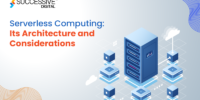Welcome to the cloud, where scalability meets flexibility, and costs can soar if not managed effectively. Cloud infrastructure is a powerful tool, but optimizing costs is a critical aspect of maximizing its benefits. Let’s explore some quick tips for reigning in those cloud costs and ensuring your infrastructure aligns with both your needs and budget!
1. Rightsize Your Resources
Start your cloud cost-cutting journey by rightsizing your resources. Assess the actual needs of your applications and adjust the size of your virtual machines (VMs) accordingly. Avoid over-provisioning, as paying for resources you don’t use is like leaving money on the cloud table. Rightsize to match your workload requirements and avoid unnecessary expenses.
2. Embrace Reserved Instances
Reserved Instances (RIs) provide a cost-effective alternative to on-demand pricing. By committing to a one- or three-year term, you can enjoy significant discounts compared to pay-as-you-go rates. Identify stable and predictable workloads within your infrastructure and leverage RIs to lock in savings. It’s a strategic move that pays off in the long run.
3. Leverage Spot Instances
Take advantage of Spot Instances for workloads with flexible start and end times. Spot Instances allow you to bid on unused EC2 capacity, providing substantial cost savings compared to on-demand instances. While not suitable for all applications, Spot Instances can be a game-changer for workloads that can tolerate interruptions.
4. Optimize Storage Costs ️
Optimize your storage costs by regularly reviewing and categorizing your data. Utilize the appropriate storage class for different types of data based on access frequency and retrieval speed requirements. Implement data lifecycle policies to automatically transition less frequently accessed data to more cost-effective storage tiers, such as Glacier for archival purposes.
5. Monitor and Analyze Resource Usage
Continuous monitoring and analysis are key to effective cost management. Leverage cloud monitoring tools to track resource usage, identify underutilized assets, and detect potential anomalies. Real-time insights enable proactive decision-making, allowing you to adjust resources as needed and avoid unnecessary expenses.
6. Explore Serverless Computing
Embrace serverless computing for specific workloads where it makes sense. Serverless architectures, such as AWS Lambda or Azure Functions, allow you to pay only for the compute time consumed by your application. This can result in substantial cost savings, especially for sporadically executed tasks or event-driven applications.
7. Establish Budgets and Alerts
Set clear budgets and utilize alert mechanisms to stay informed about your cloud spending. Cloud providers offer budget management tools that allow you to define spending limits and receive notifications when thresholds are approached or exceeded. This proactive approach empowers you to take corrective actions before costs spiral out of control.
As you navigate the cloud landscape, remember that optimizing costs is an ongoing process. By rightsizing resources, leveraging reserved and spot instances, optimizing storage, monitoring resource usage, exploring serverless computing, and establishing budgets and alerts, you’ll be well-equipped to master the art of cloud cost cutting. Happy cost savings in the cloud! ☁️








